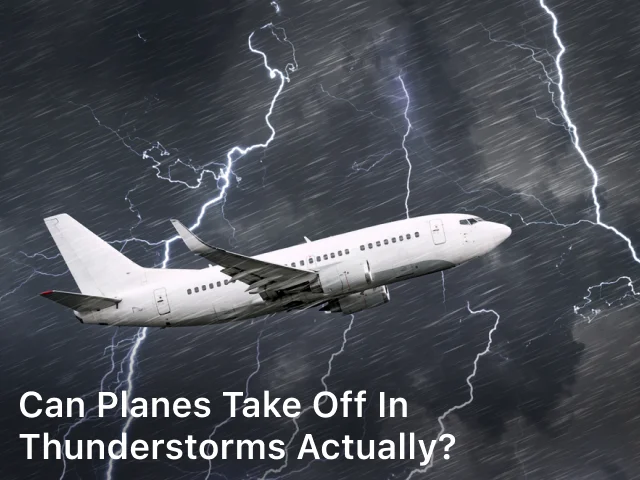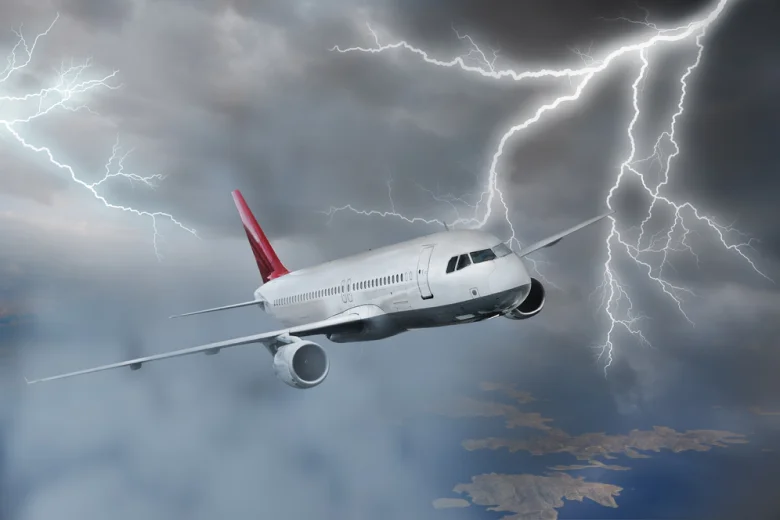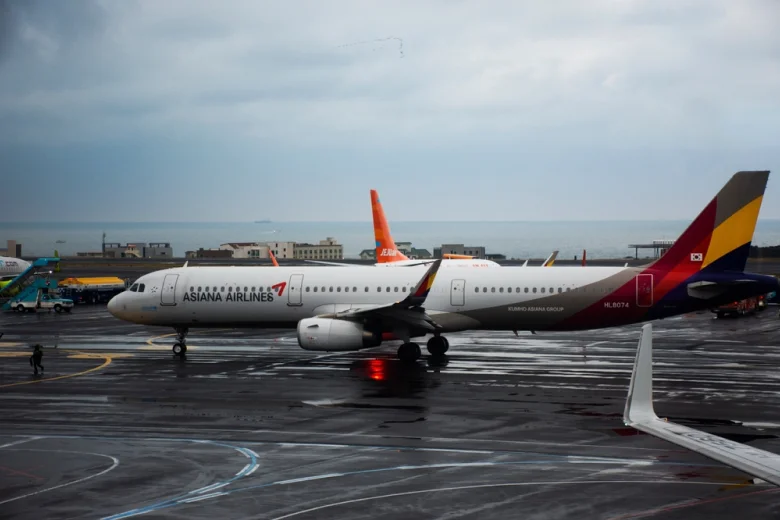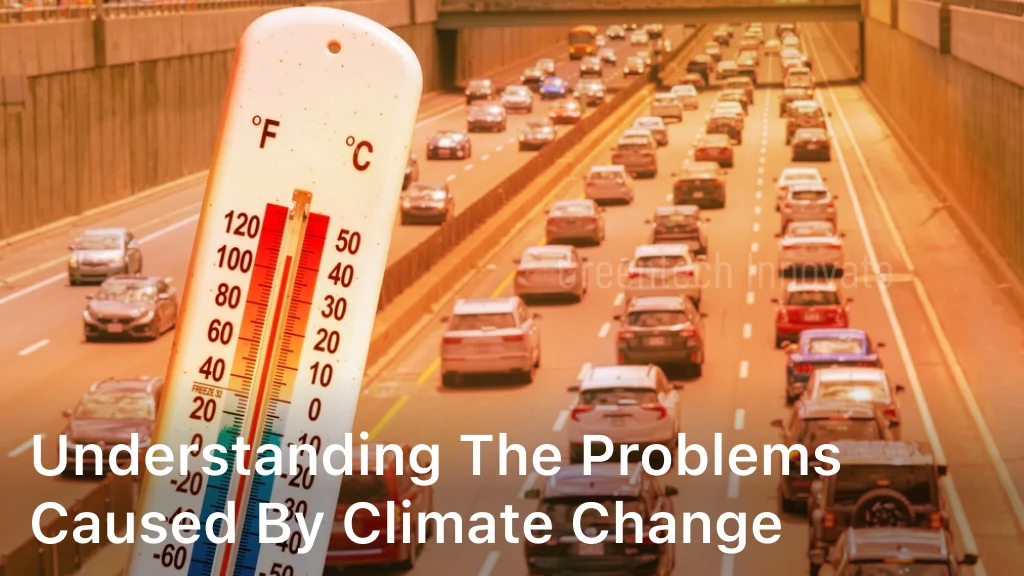
greentechinnovate.com. Can Planes Take Off in Thunderstorms Actually? – Discover the fascinating world of aviation safety as we explore the question: Can planes take off in thunderstorms? Learn about advanced technology, aircraft design, and pilot expertise that ensure safe and comfortable flights in turbulent weather. Find answers to your thunderstorm-related aviation queries in our FAQs.
Wish to know more about planes taking off and flying in thunderstorms? After that you are in the right place because this guide consists of everything you need to know about how serious weather can impact airplane and trips!
Is it safe for planes to take off and land in thunderstorms, what weather are most harmful for airplane, and whether tornados terminate trips are simply some of the subjects protected in this guide.
I’ve protected everything you need to know about flying in thunderstorms, consisting of when pilots and air traffic control prefer to maintain the plane based to ensure the safety of team and passengers.
Can A Plane Take Off In A Thunderstorm?
Theoretically, an plane is perfectly qualified of taking off in an electrical storm. But in practice, pilots and air traffic control usually prefer to maintain the airplane based until the overall weather improve.
This is because of traveler safety and convenience – although many pilots can taking off in an electrical storm, it is certainly not a nice feeling and would certainly leave many passengers feeling terrified.

Can Planes Land In A Thunderstorm?
Planes can land securely in thunderstorms, and many of them often do. However, it typically depends on present weather and the pilot’s expertise, and it is often up to the pilots to decide whether they can securely land a plane in challenging weather.
The main risk throughout thunderstorms are microbursts – small but very solid columns of air. Microbursts can significantly affect the instructions of a plane, which in transform makes it very challenging for a pilot to keep control of the airplane.
Keep Reading : What is The Impact Factor Nature Climate Change?
Can Planes Fly In Thunderstorms?
Modern airplane can and often fly through thunderstorms, but it is not the best feeling on the planet. Jetsreams and gusty weather can increase the risk of turbulence, which may not position a genuine risk to passengers, but never ever really feels great to experience.
Also, planes will often avoid thunderstorms when they’re flying at travelling altitudes. The travelling elevation of a plane is about 35,000 feet, and most thunderstorms and rainfall occur a lot lower in the atmosphere. So, if the weather permits takeoff and touchdown, there should not be any significant problems throughout the real trip.

Dangers of Flying Throughout Thunderstorms
Hailstorm
Hailstorm is typically considered incredibly harmful and most pilots will avoid flying in hailstorm thunderstorms. This is because hailstorm easily causes physical damage to airplane, particularly at greater altitudes where hailstones have the tendency to be a lot larger compared to what we see on the ground.
Pilots are recommended to anticipate hailstorm at greater altitudes throughout any thunderstorm, also if there’s just hefty moisten the ground.
Hailstones that are greater than 0.5″ in size can cause serious damage to the airplane, particularly to the nose of the plane, the cabin, and the wings, which can in transform significantly decrease exposure and intensify the safety circumstance.
Air traffic controllers and pilots prefer to maintain planes on the ground throughout hailstorm thunderstorms, at the very least until the problems can be improved enough to guarantee the safety of passengers and team.
Microburst
Microburst is a unexpected but effective gust of air that can impact a plane’s instructions and the pilot’s ability to control the airplane. An plane can usually encounter this sensation throughout touchdown and takeoff, and it can be especially harmful for the airplane because it’s moving at an extremely reduced speed.
Because of this, air traffic control will often not allow planes to take off or land if there’s a high opportunity of microbursts that can impact the pilot’s ability to control the plane. But that is just if the plane cannot avoid a microburst, which does not occur very often because of modern alert systems.
Lightning
Lightning strikes sound frightening, but they actually cause minimal damage to industrial airplane. In truth, most industrial planes will experience a lightning strike a couple of times a year, so this is something that planes are perfectly equipped to deal with.
The damage from a lightning strike differs. It can be simply aesthetic sometimes, but it is also feasible that it causes damage to the plane skin, or also disrupts the electric system of an airplane. However, it is incredibly unusual that a lightning strike causes major problems on an airplane.
Icing
Icing can occur when flying at high altitudes in incredibly winter. Supercooled sprinkle beads will instantly ice up after contact with airplane, which can be incredibly harmful.
In truth, if you are acquainted with what it considers an plane to fly in snowy problems, you will know that many trips obtain terminated until staff can effectively de-ice the plane.
Ice on the body of the plane can affect the air flow, which in transform makes it harder for pilots to control the airplane. Ice accumulation inside engines is incredibly harmful, but this is incredibly unusual and there are ways for pilots to deal with this airborne.
Wind shear
Wind shear is a change that occurs in the speed or wind instructions over an especially brief range. Wind shears can occur both up and down and flat, and they are usually associated with solid inversions in temperature level and also thickness gradients.
This sensation can occur at both low and high altitudes, and it’s considered a significant risk for planes, especially at lower altitudes.
Flying through wind shear can cause an airplane to shed speed and elevation, which the pilot after that needs to make up for in various other ways.
If the airplane encounters solid winds throughout touchdown, it can cause the plane to land brief or lengthy and warm, depending upon the response time of the pilot and whether the airplane is too reduced to permit for healing.
In various other words, wind shear is a harmful weather sensation, but it is something skilled and positive pilots can overcome provided they respond quickly and they’re not too shut to the ground. Nevertheless, the risk it positions means that most airplane will remain based until the risk of wind shear is considered minimally harmful.
Keep Reading : How to Survive a Fire Tornado?
Can Thunderstorms Cause a Trip to Obtain Terminated?
Yes, thunderstorms can definitely cause trips to obtain terminated. Although thunderstorms usually do not position a danger serious enough that there’s a risk of a plane collapsing in among them, they can be so solid that the pilots consider the weather too serious for takeoff and touchdown.
When this holds true, many trips will be postponed or also completely terminated because of bad weather. In situation of unfavorable weather at touchdown, pilots may decide to land at a various flight terminal.
Impacts of Thunderstorms on Light Aicrafts
Thunderstorms are more harmful for small planes compared to for industrial airplane. The main reason is that light airplane are not qualified of flying at very high altitudes, which would certainly permit them to fly over thunderstorm clouds.
Also, smaller sized planes are not as well equipped to deal with unfavorable problems, and it is typically restricted to fly them in bad weather. They seldom have any ice protection, and they’re more in danger from hailstorm, wind shear, lightning, and all the various other dangers that an electrical storm positions.
Can an plane take off or land in high winds?
Yes, modern planes can securely take off and land also in high winds. It will be a bit rough throughout takeoff and touchdown, but pilots can usually complete both stages of the trip securely.
However, incredibly solid winds will cause trip hold-ups. Takeoff and touchdown are usually restricted when the speed of wind exceeds 34-40 miles per hour because it becomes incredibly challenging to guarantee a completely safe takeoff/touchdown.
Keep Reading : How do Mountains Affect Weather and Climate Today?
Can Planes Take Off in Thunderstorms?
In conclusion, the answer to the question, “Can planes take off in thunderstorms?” is a resounding yes. Modern aviation is a testament to human ingenuity, where advanced safety measures, meticulously designed aircraft, and well-trained pilots work in harmony to ensure the safety and comfort of passengers.
So, the next time you find yourself on a plane as a thunderstorm brews, you can rest assured that you’re in the capable hands of professionals who are committed to your well-being.
Often Asked Questions
Exists a kind of thunderstorm that positions a greater risk to an airplane?
Yes, those would certainly be supercell thunderstorms that often produce golf-ball-sized hailstones and serious turbulence. Those 2 position the best risk to airplane, and hailstorm particularly is considered very harmful because it can cause damage to the aircraft’s body.
The radome of a plane is most in danger, which belongs to the plane that houses the weather radar systems which are extremely important for pilots. Hailstorm can also damage the windscreens in the cabin, which eventually positions a risk to the pilots and can significantly decrease exposure.
Can an electrical storm bring down a plane?
It can theoretically, but it’s incredibly not likely that an electrical storm would certainly bring down an airplane. In truth, most modern airplane can be struck by lightning and experience absolutely nothing greater than aesthetic damage.
So, although it may be frightening to fly through rumbling and lightning, the chances of it triggering any damage to the real plane are really minimal. Hailstorm, rainfall, and wind are all considered a lot more harmful for planes compared to rumbling and lightning strikes.
Also, I must explain that the highest risk of injuries throughout serious turbulence is dropping. It is a lot more most likely that you’ll obtain hurt if you’re walking the cabin throughout turbulence, or that baggage might landed on you, compared to that the plane will crash. So, maintain that in mind, and pay attention to the cabin team when they inform you it is time to twist down and wait on the turbulence to more than.
Can A plane take off in spread thunderstorms?
Yes, airplane can take off in spread thunderstorms. Spread thunderstorms are usually spread out out over a bigger location, so they’re actually much less harmful for planes. Rainfall, hailstorm, and microbursts are much less focused, so the overall risk for planes is lower, enabling them to take off, fly, and land securely.
Does a plane fly over tornados?
Sometimes, but not constantly. If a plane’s trip elevation is over the thunderstorm clouds, after that planes can securely fly over tornados. However, one of the most fierce tornados usually come from the highest clouds, and planes cannot constantly fly high enough to cruise over these. That is why many pilots will fly much longer routes, to try and fly about these tornados, if they’re enabled to fly in such weather at all.




